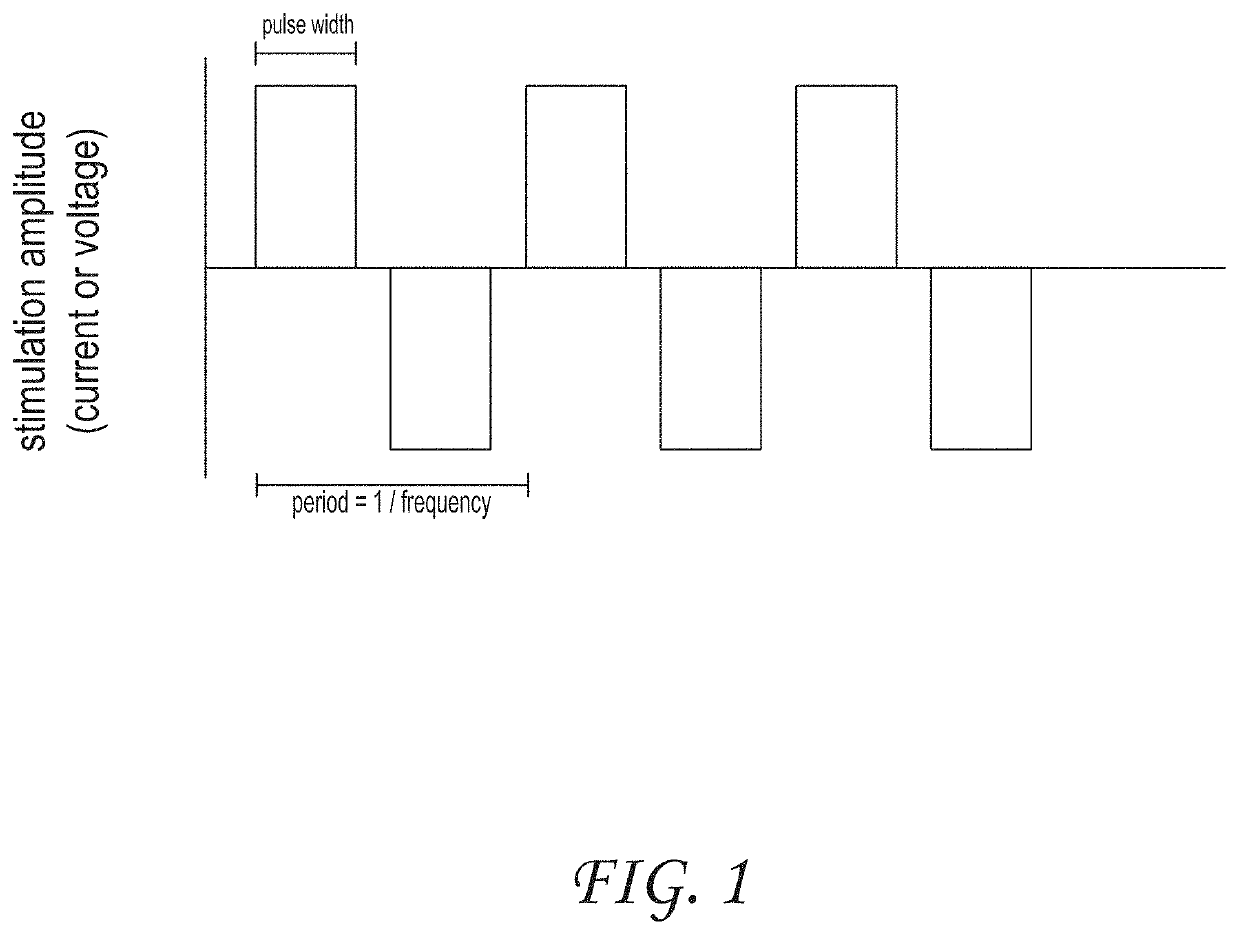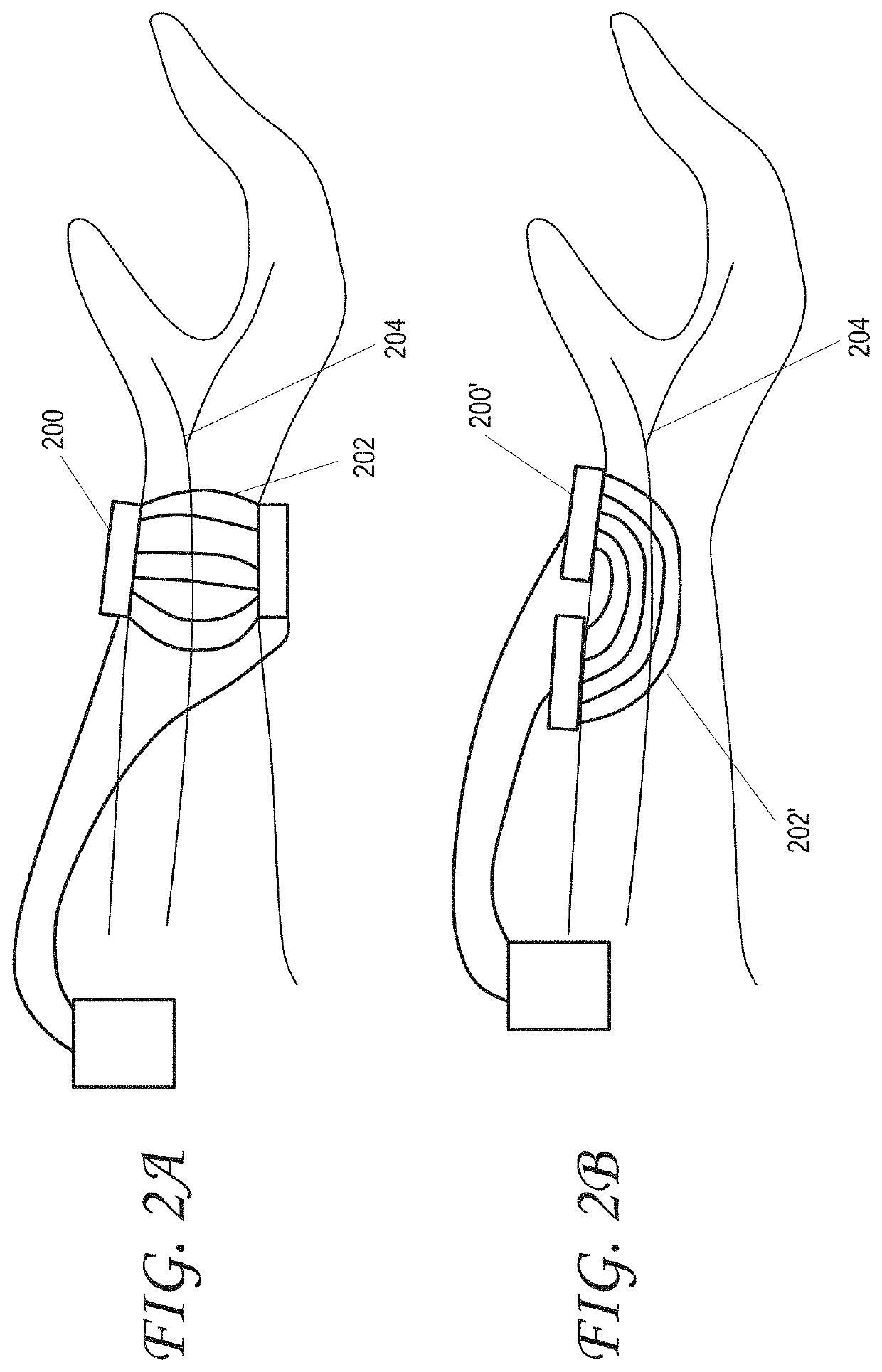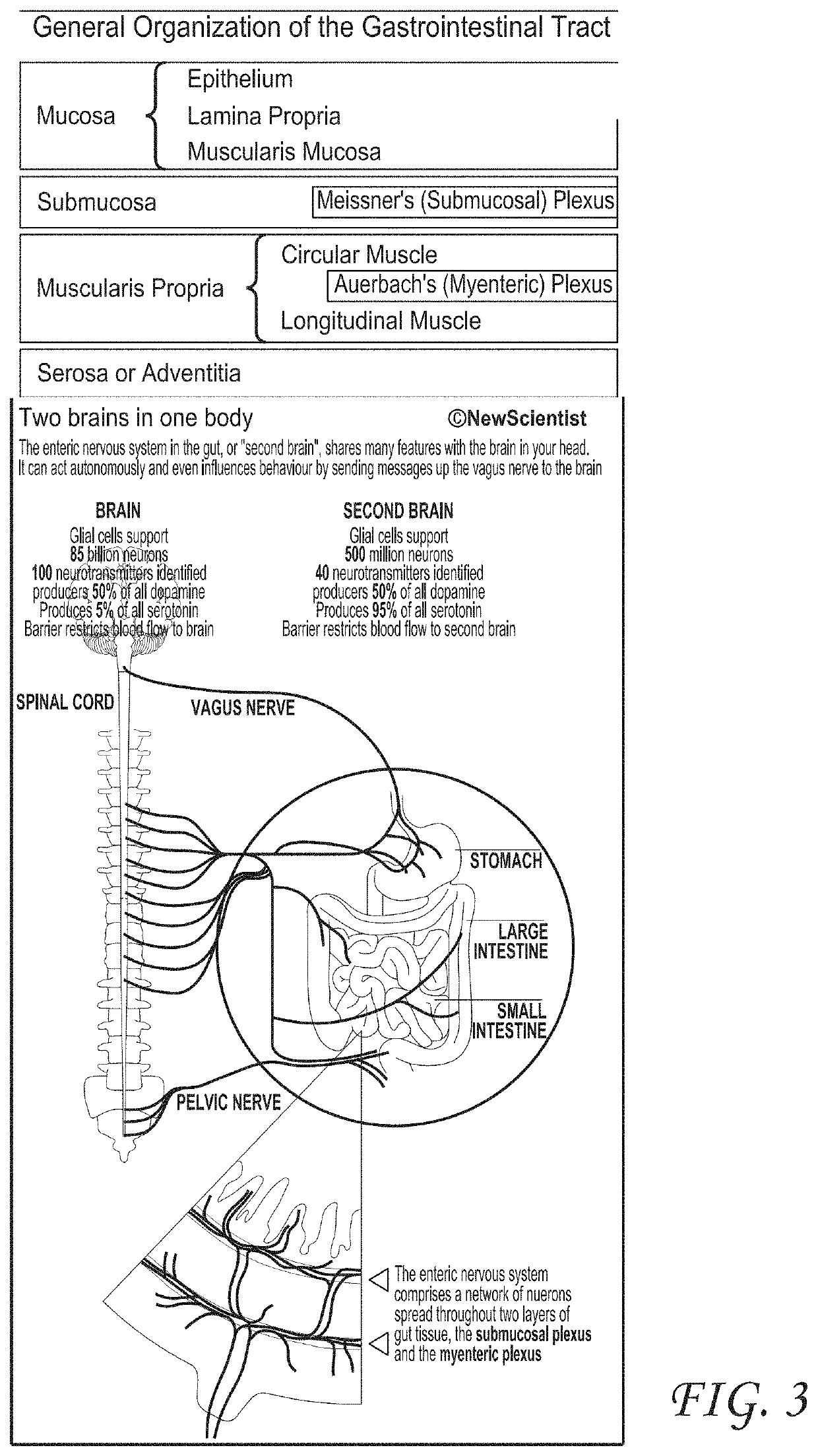Systems and methods for treating inflammatory bowel disease through peripheral nerve stimulation
a peripheral nerve and inflammatory bowel disease technology, applied in the field of inflammatory diseases, can solve the problems of inconvenient home use of a percutaneous system, limited form factor, and inconvenient patient care, and achieve the effects of modulating the synthesis of inflammatory biomarkers, reducing inflammation, and reducing inflammation
- Summary
- Abstract
- Description
- Claims
- Application Information
AI Technical Summary
Benefits of technology
Problems solved by technology
Method used
Image
Examples
Embodiment Construction
[0054]Several embodiments of the invention relate generally to the treatment of inflammatory bowel diseases and chronic inflammation of the digestive tract which may be due to an autoimmune response, including ulcerative colitis, Crohn's disease, microscopic colitis, and irritable bowel syndrome, and more specifically to systems and methods of treating inflammatory bowel diseases, including ulcerative colitis, Crohn's disease, and microscopic colitis through noninvasive peripheral nerve stimulation. Other non-limiting examples of indications for systems and methods as disclosed herein are also disclosed. Not to be limited by theory, some mechanism of actions including pathways that can be utilized by systems and methods as disclosed herein will now be described. Stimulation of peripheral nerves, such as, for example, vagus, median, radial, ulnar, tibial, sacral, or saphenous nerve can modulate autonomic tone. In some embodiments, there can be a synergistic effect of modulating both ...
PUM
 Login to View More
Login to View More Abstract
Description
Claims
Application Information
 Login to View More
Login to View More - R&D
- Intellectual Property
- Life Sciences
- Materials
- Tech Scout
- Unparalleled Data Quality
- Higher Quality Content
- 60% Fewer Hallucinations
Browse by: Latest US Patents, China's latest patents, Technical Efficacy Thesaurus, Application Domain, Technology Topic, Popular Technical Reports.
© 2025 PatSnap. All rights reserved.Legal|Privacy policy|Modern Slavery Act Transparency Statement|Sitemap|About US| Contact US: help@patsnap.com



